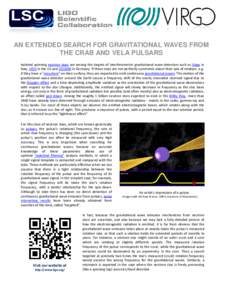<--- Back to Details
| First Page | Document Content | |
|---|---|---|
 Date: 2014-11-03 12:47:29Space Radio astronomy Binary stars Gravitational wave Neutron star LIGO Star X-ray pulsar PSR B1937+21 Astronomy Star types Pulsars |
Add to Reading List |
| First Page | Document Content | |
|---|---|---|
 Date: 2014-11-03 12:47:29Space Radio astronomy Binary stars Gravitational wave Neutron star LIGO Star X-ray pulsar PSR B1937+21 Astronomy Star types Pulsars |
Add to Reading List |